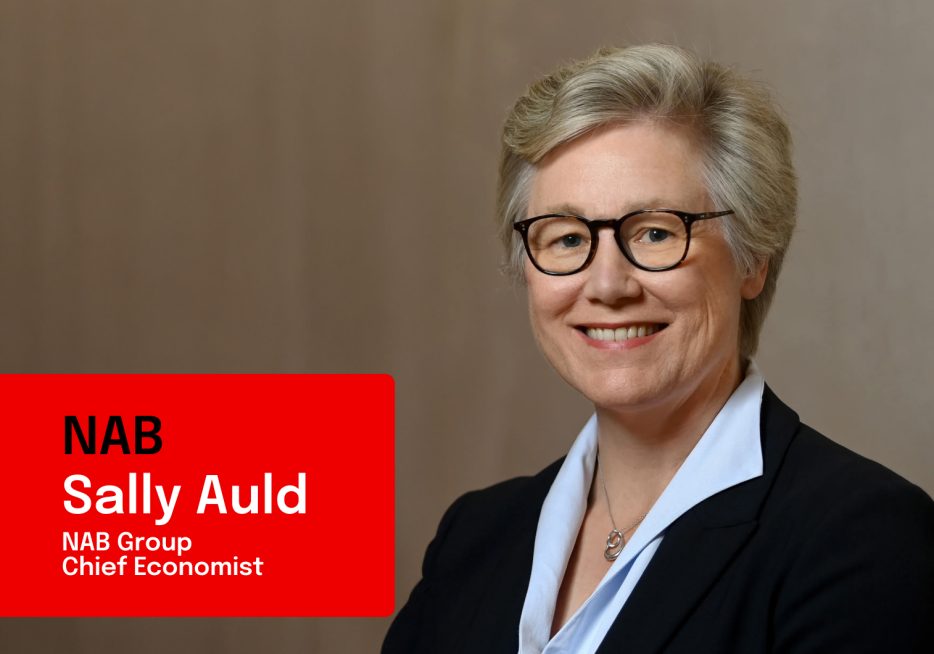We hear from NAB Group Chief Economist, as she shares her latest economic update. Watch now.


Facebook, Twitter and Instagram are probably not the first things that come to mind when you imagine setting up a new school. Principal Ian Hewitt describes how social media is fundamental to building the identity of a new school, and helping to foster a new community.
Ian Hewitt, Principal of the Anglican School Googong, explains how his school is using social media to build brand and community in a greenfield township.
The Anglican School Googong opened its doors for the first time on 20 January last year. Currently educating children from Preschool to Year 3 in the greenfield development of Googong, south of Queanbeyan, it’s projected to grow to a P-12 school over the next 8 years, as the community itself expands from its current 1,200 residents to 20,000.
Starting up and growing alongside its community gives the school a unique opportunity to create an identity that places it at the hub of the town, and social media is a key element of that ‘brand building’, according to the team steering the school’s development.
From the outset, as Principal Ian Hewitt explains, they knew social media was fundamental for the parents. “Because we’re a brand new school, and we have children up to Year 3, 8 or 9-year olds, we knew that for our prospective parent body, social media is what they grew up with,” says Hewitt.
So it makes sense that these parents would expect news about the school and its students to be delivered via social media. Googong uses the immediacy of the instant post to show what’s happening, and what’s different in its classrooms compared to most other schools.
“Most schools are trying to change the way they operate, but because we’re a greenfield school, we can start there right now. Enquiry-based learning, very flexible learning spaces, helping to create the children as learners by using the language of learning – we want to show people what it looks like, because until you see it, it’s hard to explain. That’s where social media works brilliantly, it’s that instant thing – you can just get the photos straight out there,” Hewitt says.
The response has been very positive with Hewitt’s vision and enthusiasm for the school shared by most parents: “On the whole our parents have been fantastic [about children’s photos being published] because they enjoy seeing their children in that space as well, and that’s part of it – they love seeing what we do. So today there will be a post going up about choir practice this morning, a video. We know that will get lots of traction, probably about 1000 people will engage with that.”
But it’s not simply what’s happening in the classrooms that the school shares via Twitter, Instagram and Facebook. Its aim is to be a hub for the whole of the local community so Facebook posts might include everything from healthy food ideas and local events, to teaching children to tie their shoelaces. And it seems to be working: “I’ve got 60 parents in the school, yet at the moment we have over 900 likes on Facebook,” says Hewitt.
Engagement with the wider community has also been a success. When the school posts information about local events, they’ve often found Queanbeyan Council picking up those posts and reposting them. Hewitt laughs as he describes this. “Because we are so much more on top of it than they are, it works brilliantly for us. There’s nothing like someone posting something about their event from your space!”
For other schools keen to leverage the power of social media, Hewitt emphasises the importance of investing in the resources to truly engage with the social media community. A social media strategy can never be a ‘set and forget’ approach. He gives a recent example where someone commented on Facebook that the fees were very high. The school itself (having provided the fee information) didn’t respond.
“But then some of our parents responded in a really positive way,” says Hewitt. “So they sold our brand for us. So that’s the idea – you’ve got to actually engage and you want a community of supporters, to help you provide the story, and the commentary.”
It’s a given that at some time, someone will post a negative comment. But the school’s policy is to avoid pulling any message off their Facebook page, even if it is negative, understanding that ‘you’ll get hammered for trying to censor things”. Instead, by fostering its online community, the school can be confident that parents will go in themselves to refute any negative feedback and reinforce positive messages about the school.
In the short time since it began operating, the Anglican School Googong has managed to already forged a strong sense of community and participation through its focused social media strategy. It will be fascinating to see what the future brings.
More from NAB:
© National Australia Bank Limited. ABN 12 004 044 937 AFSL and Australian Credit Licence 230686.